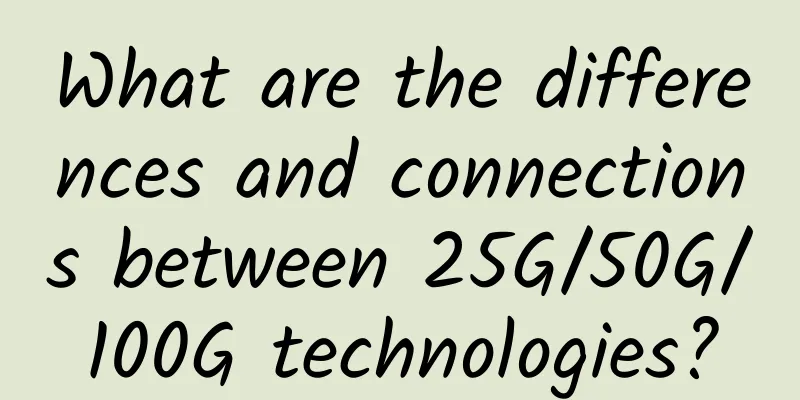Does it just look familiar? What is the advantage of 802.11ac Wave2?

|
When choosing wireless routers or APs, especially those high-end products that are expensive, we often see words like "MU-MIMO" and "802.11ac Wave2" in product descriptions. In fact, MU-MIMO technology is the essence of the 802.11ac Wave2 standard. Why, does it feel familiar to 802.11ac Wave2? In fact, it is the second wave of 11ac. In this issue, we will explain to you in more detail: What is "Wave2" and what is so good about it?
Let’s get down to business. What’s so good about Wave2? Before we officially talk about 802.11ac Wave2, we first need to understand what 802.11ac is and what its features are. IEEE 802.11ac is a communication standard of 802.11, an upgraded version of 802.11n. Now let's get to the point. The 802.11ac standard has four key features, namely 256QAM modulation mode, 80/160MHz bandwidth, higher spatial streams, and MU-MIMO technology. In other words, these four points must be met at the same time to be considered true 802.11ac, and network speed and network experience can be considered a step forward, and 802.11ac Wave2 has done all of these. Of course, some people may be confused by the concepts here. Wave2 is just a suffix of a noun, and 802.11ac Wave2 is the full name. We often colloquially refer to Wave2 technology just because we are lazy. 802.11ac Wave2 is not a new technology, and the black technology behind it should be MU-MIMO. First, let's look at 256QAM. QAM, or quadrature amplitude modulation, is a modulation technique. The higher the QAM level, the more data is contained in each transmitted wireless signal, and the higher the transmission efficiency. 802.11ac Wave 2 supports the more efficient 256QAM (8-bit) modulation mode, which improves the modulation efficiency by more than 30% compared to the 64QAM (6-bit) used in 802.11n (how is it calculated? 8-6 and then divided by 8). As shown in the figure below, we regard each point as a data packet. It can be seen that the data packet density in 256QAM mode is much greater than that in 64QAM mode, and the total amount of data transmitted in the same time is naturally greater.
Here, we need to note that higher QAM will lead to higher bit error rate. But even so, the efficiency of 802.11ac Wave2 is still much higher than 802.11n. Data shows that taking the bit error rate into account, under the same bandwidth and number of links, the theoretical rate of 802.11ac Wave2 is at least 20% higher than 802.11n. Next, let's look at bandwidth. 802.11ac Wave2 adds the more scarce 160MHz bandwidth based on 802.11n's 20/40MHz bandwidth and 802.11ac Wave1's 80MHz bandwidth. In theory, 160MHz can indeed bring higher transmission rates (1x1 single-stream transmission rate can reach 867Mbps), but you also see the word "scarce". What does "scarce" mean? If you don't have resources, you can't deploy it, which is just empty talk, especially in China where spectrum resources are not abundant. According to the standard, to deploy 160MHz, you need a continuous 160MHz bandwidth or a combination of two non-contiguous 80MHz bandwidths. So, look at the picture above. Are there any resources? Yes, there is one... Then what is the point of supporting 160MHz? Can this still be considered an advantage? Of course it is, it is better than nothing. Next is spatial stream. This term sounds abstract and mysterious, but it is actually the easiest to understand among many features. So what is spatial stream? Usually, the number of spatial streams refers to the number of antennas (of course there are exceptions, which involve antenna technology). More antennas mean higher gain, which also increases fault tolerance, improves terminal coverage and quality, and drives transmission performance. For example, we mentioned 802.11ac Wave2 at the beginning. Wave2 supports 4 spatial streams, so this wireless router/AP uses 4 transmit and receive antennas, that is, 4T4R four transmit and four receive, which we often call 4x4 MIMO. What is MIMO? We will talk about it in detail later. In order to make it less abstract, we posted the following picture to help you understand. The sharp-eyed students said that they saw 8 spatial streams? QAM modulation seems to have been upgraded? Yes, this is Wave3, which is more advanced than Wave2. Finally, let's talk about MU-MIMO technology, which is also the essence of 802.11ac Wave 2 or the entire IEEE 802.11ac standard. Its emergence has broken a shackle that has plagued the wireless field for many years - how to improve the processing capacity of multi-user data concurrency. In other words, how to maximize the use of bandwidth resources and increase utilization. This is a rare horizontal development, rather than a vertical increase that blindly pursues the maximum transmission rate. The importance of MU-MIMO technology is such that there are many articles on the Internet that use it as a popular science and experimental object. Even if some people do not understand 802.11ac Wave 2, they will know something about MU-MIMO. Therefore, we will only give a brief introduction here. In the 802.11n era, we often hear the term "MIMO" (also known as SU-MIMO), which stands for "Single User Multiple Input Multiple Output". Simply put, it is only good at single combat, one wireless router/AP and one terminal. If there are more people, it will be doomed and it cannot fight on multiple lines. The hallmark of the 802.11ac Wave 2 era is the introduction of the key MU-MIMO technology (Multi-User Multiple Input Multiple Output). Wireless routers/APs in MU-MIMO mode are like having three heads and six arms, and can now fight on multiple fronts and participate in group battles. |
<<: National Cyber Security Awareness Week 2017
>>: 10 common data center operation and maintenance errors that can cause panic
Recommend
Meituan second interview: TCP's four waves, can it be reduced to three?
Hello everyone, I am Xiaolin. I have posted this ...
How do 5G base stations control mobile phones under NSA?
The 5G network architecture is divided into SA an...
VXLAN and MPLS: From Data Center to Metro Ethernet
In recent years, the evolution of cloud computing...
RAKsmart: US VPS monthly payment starts from $0.99, 4G memory cloud server starts from $4.99/month
RAKsmart has launched a new promotion in October,...
Interpretation of the 2020 financial reports of the three major operators: revenue and profits exceeded expectations, and the value of 5G is in the ascendant
Recently, the three major operators released thei...
Horizontal comparison of NB-IoT technologies of the three major operators in terms of infrastructure construction, ecosystem construction, application expansion, and tariff competition
In the blink of an eye, we have entered 2018. In ...
5G starts with the network taking the lead. H3C MSR 5G router promotes the implementation of 5G applications
In the era of the Internet of Everything, 5G, as ...
Inventory: Excellent NaaS providers in 2021
NaaS, short for Network as a Service, is a servic...
2017 Inspur Cisco Network Strategy Conference is about to be held
On November 15, 2017, Inspur Cisco Network will h...
How do Huawei, ZTE and the three major operators plan for 5G?
What is 5G? 5G is the fifth generation of mobile ...
Behind Gu Ailing's victory at the Winter Olympics: Communications people are silently persevering
7×24 hours uninterrupted protection Communication...
A Brief Discussion on WebSocket Protocol-RFC 6455
Labs Guide Before the emergence of WebSocket, the...
McKinsey: 5G development is not fast, and 5G upgrades will reach a climax in 2022
The 5G era is coming. How does the industry view ...
Basic concepts and development prospects of Bluetooth Mesh protocol
Each device node in the Mesh network can send and...









